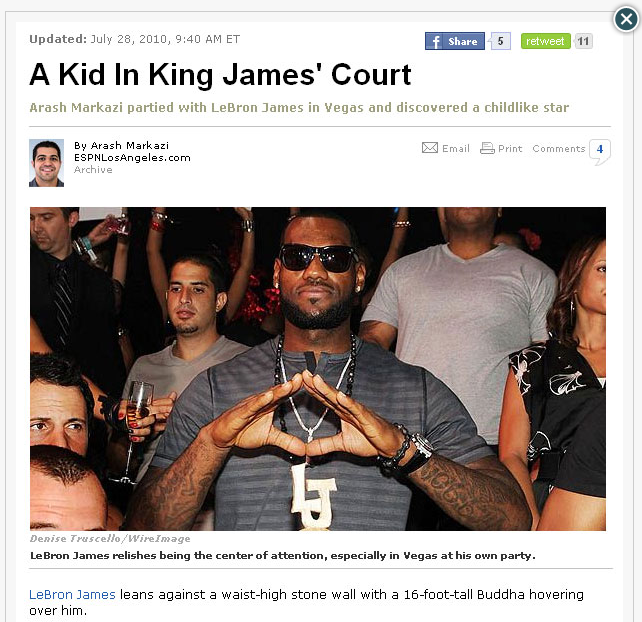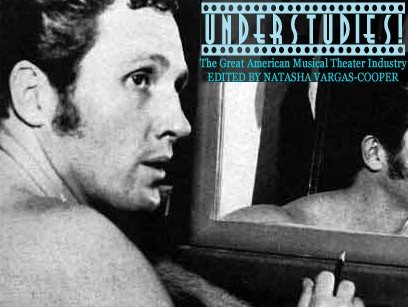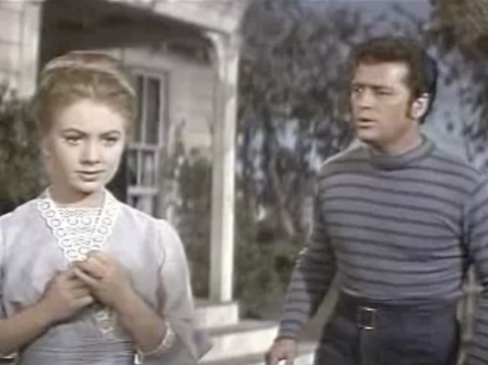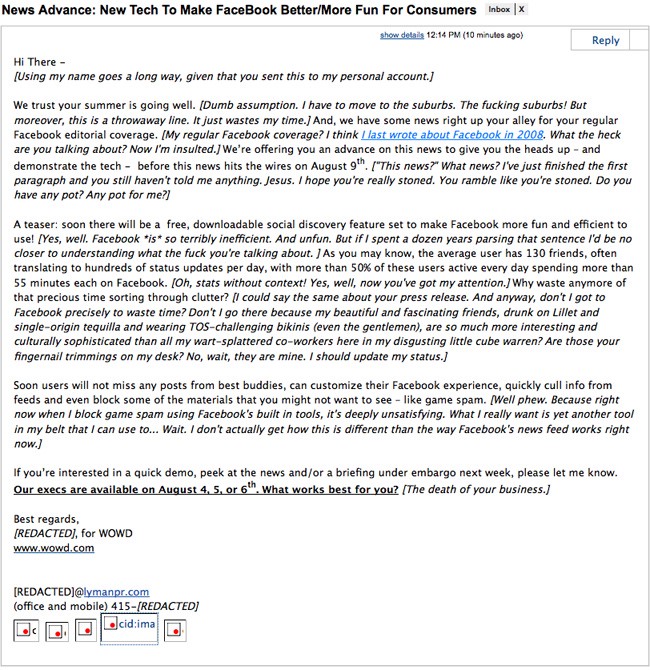Terrible News: Sarah Palin 4 Kidz Biography On Hold
The “young readers” Christian biography of Sarah Palin has been shelved. Too bad, because it sounds great! “Vanity Fair, which published a critical post-mortem on the McCain campaign, is called a ‘widely read gossip magazine.’” Well, half-right.
Questions For: The Swastika

Q. How do you feel about the Anti-Defamation League’s announcement that it would no longer be counting every report of a graffitied swastika in its annual audit of anti-Semitic hate crimes? The group’s national director Abraham Foxman, declared you a “universal symbol of hate,” saying you were now “used as an epithet against African-Americans, Hispanics and gays, as well as Jews.”
A. Well, first of all, I’d like to thank them. I’m honored. It’s a very nice feeling to have been recognized as being more than a just symbol of anti-Semitism. But it’s bittersweet, too, you know?
I’ll miss being automatically included on the Jews’ list every year. And I want to them know that I still hate them just as much as I ever did. And that they’ll always have a special place in my heart. But Abe’s right: I’ve grown. There’s more things I want to do in this world, more people I want to offend than just Jews.
Your appearance last year on the Plymouth Rock was cited as evidence that your intentions had changed. Is that as accurate assessment?
Yes, definitely. That’s a good example. When I went up on that rock, that was like a “keep out” sign to anyone from anywhere who was thinking about coming to this country. Like, a middle-finger to everyone. Fuck the world! I hate you all! It’s funny, that was actually an Irish kid who sprayed me there. And, you know, a hundred, hundred-fifty years ago, I would have been trying to keep him out. The world’s a strange place.
You were adopted as a fashion symbol by punk rockers in the late ’70s. A lot of people thought that might have diluted your message. Did you feel cheapened by that?
Oh, no. I love punk rock. Oi! Oi! Oi! You know that in the ’80s, Jewish kids in New York were wearing me on their clothes. Ha! Meshuggeneh! No future! But no, it’s all good. Manson, too. Shout out to Charlie.
And how do you feel about the original co-option, when Hitler brought you to Germany from India?
Oh, I’m still all over India, you know. I’m totally mainstream there. In every temple, on the back of every cab. It’s nice to get back there and be able to blend in. Like, just go to shopping or go get a samosa or something, and not ’cause such a ruckus. But then some tourist will see me-and I’ll know it’s a Jew if their eyes pop out of their head and they start sweating more and look all uncomfortable in my presence. But then sometimes if it’s someone else, like, a politician or a famous movie star, sometimes I’ll get like just a discreet and satisfied nod of approval. Either way, it’s nice, because, it’s like, yeah, I still got it! You know, people in India say that I was actually the source of Hitler’s power. That he wouldn’t have been able to accomplish half of what he did without me. Because over there, they think I represent the rays of the sun, and so that when Hitler started putting me on all the arm bands and stuff, he was like, harnessing the power of the sun and shit. That’s pretty awesome, right? The power of the sun! We almost took over the world, me and him. Those were good times. I mean, unspeakably evil too.
Do you feel that perhaps your best days are in the past? That you may in fact be losing some of that power by spreading yourself too thin?
Please, baby, there’s enough of me to go around! But seriously, no. Not at all. Did you see what Rabbi Abraham Cooper said, from the Simon Wiesenthal Center? “The swastika is shorthand for every racist and bigot on the planet.” That’s right! I’m worldwide now. He said that it was amazing that 70 years after the holocaust, I hadn’t lost any of my potency. That is pretty amazing, when you think about it. They’re no dummies, those Jews. I’m taking it to a whole ‘nother level.
You Too Can Read the Missing ESPN LeBron James Story

Just thought it was important to further propagate the link to the story on LeBron James that got disappeared from ESPN. It may be true, as ESPN says, that it was “accidentally published”! We have no opinion. But everyone else sure does.
So What's Shirley Sherrod's Grounds for a Suit?
Ooh, Shirley Sherrod says she’s going to sue Andrew Breitbart. (Her announcement today made Twitter fun again briefly.) But. Lawyers? Please to discuss her claim.
Understudies! A Carnival Named Desire: 'Carousel'
by Molly Lambert

Carousel’s main character Billy Bigelow has much in common with Mad Men’s Don Draper besides a fondness for alliteration. He is a cocky, beautiful, ego-driven ball of macho dynamite. The carnival barker thing also makes you realize how much of Bruce Springsteen’s early style came straight off the Jersey piers. Bigelow is the kind of man who can’t help but talk down to everyone, supposedly because he hates himself, but he doesn’t seem to have a lot of regard for most other people either. “Emotion work” is defined as the act of putting on a front that differs from one’s own actual feelings. Traditional masculinity requires nonstop emotional work, monitoring that one does not reveal one’s own actual insecurities and worries, which must get exhausting.
Billy is a grifter, and a charismatic cad, executing the old-timey version of Toot It And Boot It while working as a traveling carny. He is both attracted to the pure young beauty Julie and terrified that he might infect her with his “badness.” He thinks he knows for sure that he’s no good. He is a handsome mooch who doesn’t mind living off Julie’s cousin’s money. His real problem is that he is a coward, and rather than tell Julie that he’s freaked out by being dependent on her he punches her in the face. He even admits to an angel judge in Purgatory (more on that later) that they’d argue and “she’d be right, so I’d hit her.” He is narcissistic and handsome, prone to using women for what they can give him and disappearing when it runs out.
Like opera, musical theater traffics in archetypes. The virginal heroine (soprano) and the slutty comic foil (alto). The sexual stuff is slightly camouflaged, but boy is it there. Billy and Julie meet on the carousel, where he lasciviously watches her ride one of the carved wooden horses. Say what you will about the Twilight franchise, but it has brought back the power of sexual suggestion through aggressive chasteness to film in a way not really seen since they repealed the Hays Code. The couple in Carousel only kiss, but it’s charged with more sexual tension than a month’s worth of True Blood naked scenes.
There is a wide gulf between the sheer bitterness of the story and the flowery Rodgers & Hammerstein songs. Some of the songs are corny, others are beautiful and poignant. The best of the bunch is “If I Loved You,” which hides a really depressing lyric in it about how Julie already knows Billy is going to leave her later on, even though they’ve only just met when she first sings it. The set consisting of some trees and a fake body of water is provocative psychologically for reasons I don’t even really understand.

“June Is Busting Out All Over” is a ridiculous musical number, and the biggest set-piece of the movie, the traditional mid-show attempt to unite the plot lines. There are all kinds of symbolic sexual metaphors about how horny everyone is in springtime set at a clambake. With a wink-a wink that is barely a wink-someone sings “all the rams that chase the new sheep are determined there’ll be new sheep.” There is a direct line from this to Katy Perry’s whipped cream tit-jizzing spectacular “California Gurls.” The film version of Carousel cuts my favorite song from the stage show, “You’re A Queer One, Julie Jordan.”
“Soliloquy” (more commonly known as the song passage with “My Boy Bill” in it) is an iconic story song. Bill fantasizes about his pregnant wife’s spawn being a perfect clone of himself only to realize halfway through that there is a good chance his son will turn out a daughter. She does, of course, and Bill can barely contain his disappointment and terror at being responsible for a woman he can’t really leave and certainly can’t seduce. “You can have fun with a son but you gotta be a father to a girl” he gripes, before turning tender at the thought of caring for such a delicate flower. It doesn’t even occur to him that his daughter might still turn out just like him, which she also of course does (paging Sally Draper).
Impending fatherhood invests Billy with a sudden desire to be responsible, but nobody changes on a dime like that. What would be an unbearably klutzy monologue in a straight drama makes for Gordon MacRae’s, who plays Billy, deftest moments in the film. In this Soliloquy we learn everything about Billy in a way that only musical theater allows for: the way his voice moves from a strong belt to a vulnerable lilt as he works through his thoughts, that we remain fixated for a good five minutes on a man singing about his future child while dancing around on a beach without ever thinking that it seems ridiculous.
Gordon MacRae is good, but the ur-Billy Bigelow is the man who originated the role, John Raitt (father of Bonnie).
The film role was actually originally given to Frank Sinatra, who went so far as to record all the songs before showing up and deciding to leave after being told he’d have to do two takes of each scene, one for Cinemascope and one for CinemaScope55. He supposedly walked off the set with the immortal line “you’re not getting two Sinatras for the price of one.”
There is literally a whole musical number about how “there is nothing so bad for a woman as a man who thinks he’s good” in which sleazy criminal Jigger competes with genteel cuckolded husband Mr. Snow for the love of Julie’s slutty best friend. Comments on gender essentialism are an integral part of classic American musical theater. They make the performance of gender a literal performance, in which every aspect is heightened until it reveals itself as obvious artifice (this is also why people like “Jersey Shore”…. Look, I could write a whole book about masculinity, gangs, and West Side Story. Question for the ages: what is the sexuality of Jets tomboy ‘Anybodys’?
The whole last act of Carousel is bizarre and dreamlike. Billy falls on his knife after getting caught robbing somebody in a misguided attempt to provide for his new baby. He gets sent to Purgatory (where he appears at the beginning of the film) and is given a chance to go down and observe and help his now teenage daughter Louise. He can’t really interact with her, but she is a rabble-rouser just like himself and clearly misses having a dad who is not a ghost. He offers her a gift and when she refuses it he slaps her, then disappears, and she tells her mother it felt like a kiss (no really). It is tremendously tragic and affecting later watching Billy finally break down and realize he could have been a normal dad/good guy after all when it is already TOO LATE.
As is true about Cabaret, so much of the appeal of musical theater is about the romanticism of the artificial. A field of flowers is beautiful, but a Technicolor field of fake flowers is so beautiful it borders on the grotesque. Most classic musicals are also period pieces, since we seem to readily accept stylizing the past as a means of romanticizing it. Carousel’s dark subject matter contrasts beautifully against its candyfloss costumes and carnival and clambake settings. It was a critically acclaimed box office flop, but nobody remembers that because it is so obviously a stone cold classic. We reconfigure the past to suit our stories.
Musical theater is a field that is dominated by women with strong personalities (divas) and gay men. There are perilously few of these fields, and one of them (fashion) is horrible. Will musicals ever be embraced by the mainstream? Who even cares? The popularity of Lady Gaga and Adam Lambert at least proves that we are edging towards being a country who is willing to accept our own flamboyance, and endorse pop stars raised on a diet of shlocky glam piano rock and Andrew Lloyd Webber musicals.
It might not be cool, but maybe coolness is overrated. Coolness is about detachment and musicals are all about intense attachment. Attachment to something bigger than you that unites you with other losers and outsiders and artfags stumbling through high school feeling like nobody understands why they feel miraculously better in stage makeup. It might not be cool to belt “YOU’LL NEVER WALK ALONE” at the end of “When You Walk Through A Storm” but damned if it doesn’t feel good.
Molly Lambert is the managing editor of This Recording. She direct a production of The Phantom Of The Opera starring her friends in kindergarten in which she gave herself the small but crucial comic role of Meg Giry.
Top Chef Pea Scandal
“Think about it: There are three possibilities, right? 1) Alex may indeed knowingly have stolen Ed’s pea puree and used it; 2) Alex may have made his own pea puree and been wrongly maligned by his co-contestants; or, 3) Alex unwittingly may have mistaken Ed’s pea puree for his own and taken Ed’s, but truly believing that he was using his own. In two of the three possibilities, Alex did not intentionally commit any wrongdoing.”
-Tom Colicchio does a terrific job of explaining why I don’t watch “Top Chef” “Pea-Gate,” which has rocked the “Top Chef”-watching world.
More On David Markson
Awl pal Seth Colter Walls took a trip to The Strand in search of David Markson’s personal library, and walked away with a sense of guilt and loss about the archive’s dispersal. He also walked away with a couple of pretty well annotated books, so it wasn’t a total disappointment.
Yours is a Very Bad Press Release
by Mat Honan
Hi! We’re the media. We get a lot of press releases. Press releases are almost always bad. Especially those that come to our personal email inboxes. Here’s a better idea: write an email to someone you know will care. Or don’t! You could just blindly send out a bunch of crap and then bill your client for it. I mean, why not, right? It’s not like some snarky asshole will publish your press release online, with derogatory inline notes. Oh wait.

Mat Honan is a Wired magazine contributing editor. He lives in California and last wrote about Facebook in 2008.
Mama Bear Rescues Cub
If you were distressed by our earlier bear coverage, good news: This video shows the reunion of a mother bear and her cub, whom she rescues from a fishing net it found itself entangled in. Some bear stories do have happy endings!
Things to See and Do: Mary Halvorson Plays Christian Marclay at the Whitney
by Seth Colter Walls

Grossly talented indie-rock shredder Marnie Stern has a song on her forthcoming record called “Female Guitar Players Are the New Black.” This title has the double-edged benefit of being true as well as wry-since it preempts (one hopes) a lot of lazy “think pieces” on the subject.
Still, even for underground kids who grew up swooning over the plodding-on-purpose instrumental technique of mid-90’s Kill Rock Stars bands, there is now an undeniable pleasure in seeing women give off true, hot-shit guitar grind. (For more of this, watch Marissa Paternoster of the Screaming Females rip through “Bell” here.) So while people are keeping score on this level, we should have a serious talk about Mary Halvorson.
Halvorson sits on the forward-looking end of the modern jazz continuum, which means that the small-ish number of people who know her work tend to dig it a great deal. But while she’s fully paid up on her avant-dues (thanks to having studied with Anthony Braxton), you can tell Halvorson actually listens to and cares about more popular forms. She uses distortion and other effects with a sparing restraint, while moving with ease from druggy dirge to spiky post-punk even in her clean-tone playing. Because subtle artists who also possess intensity in the reserve tank are always welcome, Halvorson’s is a public that deserves to grow a bit bigger.
This October, more than two years after her stunning debut Dragon’s Head, Halvorson will be putting out Saturn Sings — a record that finds the guitarist writing songs for her established trio, as well as for an expanded quintet that employs trumpet and alto saxophone. (She says she wanted to write harmonies for those instruments based on her affinity for both Alexander Scriabin as well as Sam Cooke and the Soul Stirrers, about which: BE. STILL. MY. ETC.) One of my favorite cuts (based on initial listening) is a quintet number called “Crescent White Singe,” which flirts with elegant swing, dreamy guitar modulations and freak-out ensemble bashing. This is a good “lunch break” song, I think (in addition to being well suited for other times of the day), and you can stream it right here.
[wpaudio url=”http://3-e-3.com/Crescent%20White%20Singe.mp3″ text=”Mary Halvorson, ‘Crescent White Singe’” dl=”0″]
Now, if you’ll allow a pivot, the thing about this city of New York — the thing that will just kill you with regret if you allow it to — is that not only are there an incalculable number of worthy things happening, but the people making those things also wind up being involved in 18 other projects led by other people that you should also check out and so, oh my God, it’s tempting to just stay home with Netflix, I guess. I had one of these mental palpitations a couple weeks ago, when I realized I was missing Sonic Youth’s Lee Ranaldo performing some of Christian Marlcay’s compositions at the Whitney Museum. I love Marclay’s early, abstract turntablism — based on records that he spliced and collaged together — and had never seen any of his visual art.
So what the heck was I doing wrong with my life that I was missing this thing at the Whitney? Eventually, I calmed down and looked at the museum’s schedule. Their Christian Marclay Festival runs through September, and features dozens of amazing musicians interpreting Marclay’s “graphic scores” at various times. And blammo: last Saturday, Mary Halvorson was one of them. In fact, she was playing twice: once at noon, with Sylvie Courvoisier on piano and Ikue Mori on electronics, and then solo at 4pm, when she had a date with Marclay’s “Wind Up Guitar” (a nylon-string acoustic guitar with 12 music boxes inside, the “winds” for which poke outside the body of the instrument, to be twisted at the player’s discretion).
It wasn’t the world’s most beautiful sounding guitar — Marclay’s invention produces a rattling tone, what with all the gear inside — but Halvorson spun a half hour of gorgeous improvisation from it anyway. Halvorson’s other performance, with Courvoisier and Mori, of the Marclay score “Screen Play” (which is just a montage of stock and silent film clips, with little superimposed graphic effects that are meant to inspire the players), was also highly enjoyable. In between the scheduled performances, I hung out in the big Marclay visual gallery, and also checked out the Whitney’s other exhibits — among which is a full-floor retrospective of video- and film-based performance art from the past few decades. (So if you pick your spots and give yourself enough time, the Whitney’s $18 adult entry fee turns out to be quite a bargain. I spent six hours there.)
And here’s how Marclay’s “graphic scores” work. (Hint: not like most composers’ scores.) Marclay doesn’t read music himself, though he does collect every scrap of musical errata he can find out in the world. He then arranges this stuff — think stray musical notes on greeting cards, book covers, New York Times illustrations, etc. — into collages that can be exhibited, as well as interpreted by musicians as the basis of an improvisation. Crucially, the public-sphere musical notation lacks important information (like, uh, time signatures). Enter the musicians, who then fill in the blanks. It’s not jazz, it’s not classical, but it can be pretty impressive if you get highly skilled people to play along.
Thanks to the Whitney, we can show you this July 23 performance of Marclay’s “Ephemera” featuring Courvoisier and Mori — as well as Mark Nauseef on percussion and downtown legend John Zorn on alto sax. If you want to see an example of the Marclay collages these musicians are looking at while they’re playing, click over this way. (Also: this video runs about 32 minutes, so maybe don’t try to watch it at work.)
So now you may be wondering “what of note is coming soon?” This Saturday, a new Marclay piece will be added to the Whitney’s rotation. “Prêt-Ã -Porter” is a graphic score made out of pieces of clothing — dresses, shirts, pants — that have musical notation printed on them. But in this case, instead of “reading” the collages like typical scores on a music stand, the musicians — including Halvorson! — will be watching models strut that clothing about the gallery space, reacting in turn to whatever they can “read” off of the clothes while all the vogue-ing is going down. The installation-cum-fashion-show-cum-musical-improvisation also incorporates a bottle of single malt scotch and several glasses, which the models and musicians are welcome to draw from at their own discretion.
I believe I’ll be going.
Now you know where to stalk Seth Colter Walls.
